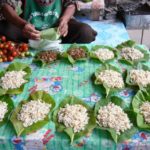Honey hunting has been a traditional activity in Bas-Congo, as in much of Africa. But beekeeping in Congo has only been practiced in the area since the early 1980’s. The beehive in common use is the top bar hive which has been introduced from Kenya. However, in Congo, the sides are vertical rather than sloping. Beehives are always sited in areas of fairly thick bush or forest and therefore usually in the Nkunku. Beekeepers choose these areas to provide shade and seclusion and to enable them to get away from the hive without being followed by bees after inspection or harvesting the honey.
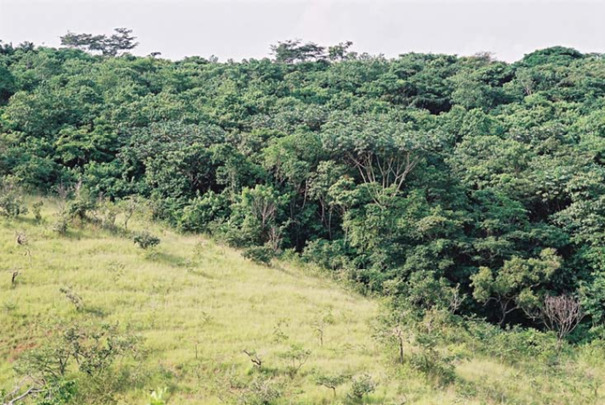
Placing of bee hives
The placing of hives in these forest fallow areas has encouraged villagers to leave the forest for longer than usual. Some beekeepers have established or allowed semi-permanent woodland areas to develop around their hives. This not only allows valuable indigenous trees, such as Millettia laurentii, and Pentaclethra macrophylla, to grow to fruit-bearing size, but farmers have planted Gnetum africanum, a high-value vegetable that requires shade, around their hives. These woodlands also attract several species of moths producing edible caterpillars, a traditional food source in Bas-Congo.
Beekeeping in Congo provides the farmer with a useful source of additional income with little extra effort or expense. It is not uncommon to find up to ten hives in a hectare of forest, yielding from 50 – 100 liters of honey per annum which was selling at $3 per liter in 2008.
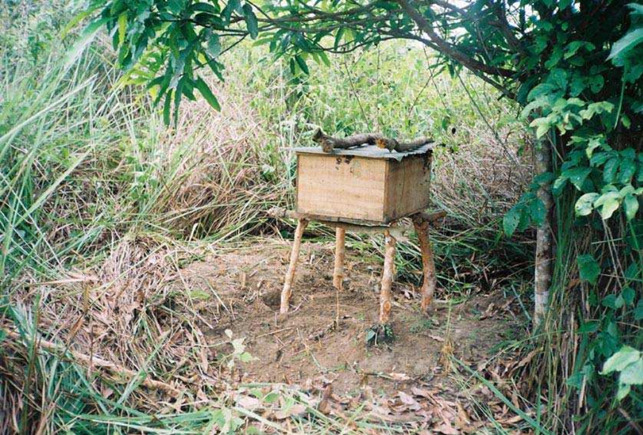
Type of bee hives used
The Top Bar Hive in Kenya has sloping sides, but these have not been found necessary for beekeeping in Congo. There, only hives with perpendicular sides are used. They are normally up to 1 m long, 50 cm wide by 30 cm deep with top bars 50 cm long and 3.2 cm wide. A single entrance of 10 cm x 5 mm is cut at one end of the hive. The hives are protected from rain with a piece of corrugated metal sheet or with a roof made from split bamboo. They are usually placed on stands made from forked sticks and a cross member. However these tend to rot after a year or two, and many beekeepers use metal stands.
Design considerations
Metal stands are especially used, where red or black ants are a problem. Ashes are spread around the hives to keep them away and their nests burned out if they can be found. The honey badger, which causes considerable trouble in some parts of Africa, does not appear to be present in Bas-Congo.


Production of a bee hive from Raffia palm wood.
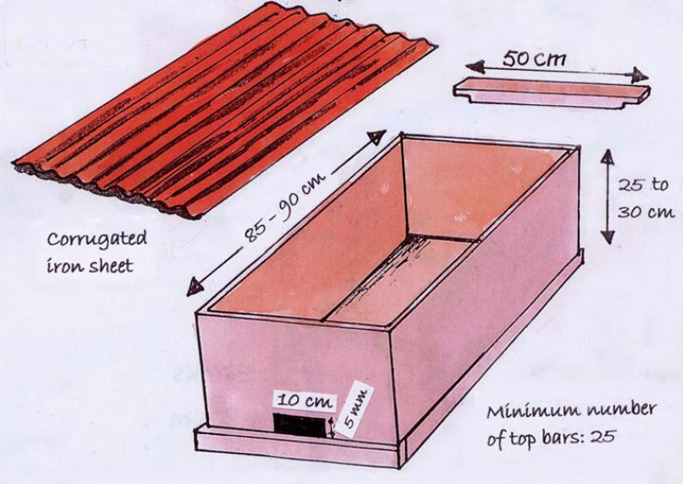
The width of the top bar must be accurately measured at 3.2 cm so that the bees construct one comb on one bar. If it is wider or narrower the bees will build combs that join bars together making it impossible to examine the combs.
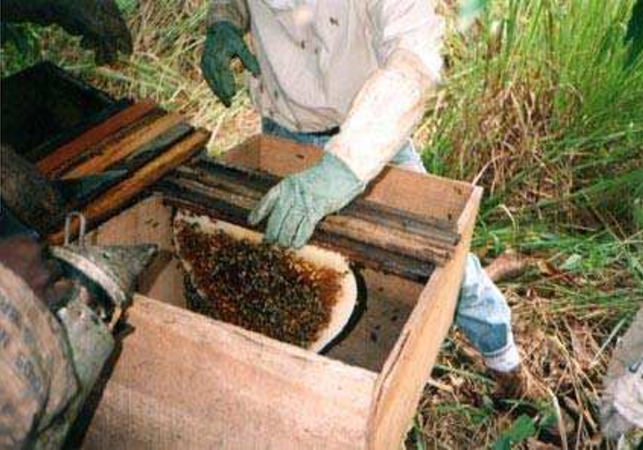
Attracting or placing wild bees in the new hive
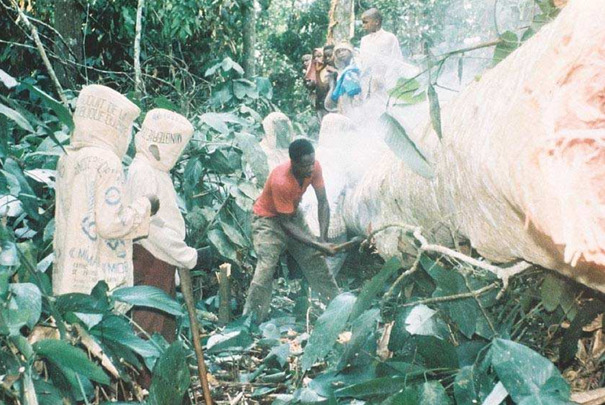

Bees normally enter hives that have been baited with beeswax, though some colonies are dug out of the ground or cut out from tree trunks. Several of the combs are then tied onto top bars in the new hive. However, the risk of absconding is always greater if the bees have been transferred manually. Often catcher boxes, containing 5 or 6 bars, are used to attract colonies in particularly suitable sites or placing.

A raised catcher box is more likely to attract swarms. It should be sited in bush or forest away from other colonies and, if possible, near water. Once the colony is well established the box can be taken back to the apiary and the colony transferred to a top bar hive.
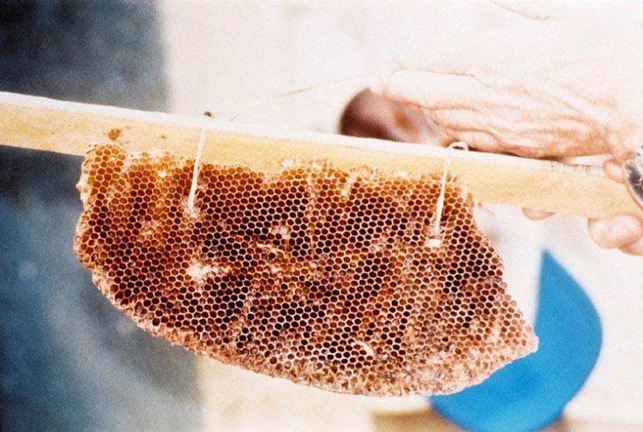
Lessons learned aboutm beekeeping in Congo:
- Bee hunting is an old tradition in Eastern- and Central Africa and was only recently replaced in many areas by beekeeping
- Beekeeping and edible caterpillar rearing go hand in hand with the conservation of remaining forests
- Sales of honey proved to be an important source of income for the rural population
_________________________________________________________________________________________________________
Text and all photos at this article © Paul Letham. The professional background and contact information of the author of this article can be found here.
Further readings about Bees on this website:
Alternative beehives in D.R. Congo
Improvised protective equipment for beekeepers
Wax extraction from honeycombs
Sweat bees – not a danger, but a nuisance
Stingless bee honey collected by Hadza people
Collecting honey in a rock crevice in Vietnam
.


